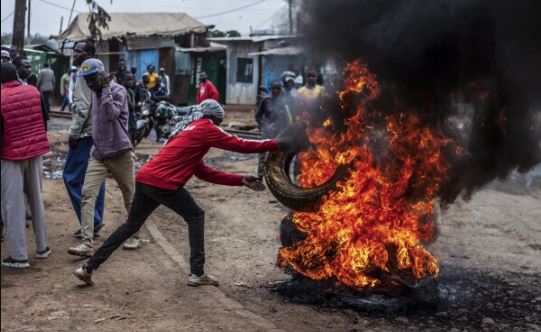Nairobi: The number of Kenyans who died during Wednesday’s nationwide protests over police brutality and bad governance has doubled to 16, according to the state-funded human rights commission.
Property was also destroyed in the protests that attracted thousands of frustrated young Kenyans. At least two police stations were razed by angry protesters.
Kenyans demonstrated Wednesday in 23 of 47 counties across the country, calling for an end to police brutality and better governance. Thousands chanted anti-government slogans, and the protests morphed into calls for President William Ruto to resign.
Many protesters were enraged by the recent death of a blogger in custody and the shooting of a civilian during protests over the blogger’s death.
The country’s interior minister, Kipchumba Murkomen Thursday assessed damage to businesses in the capital, Nairobi, where goods were stolen from multiple stores. He said police would follow up with owners whose CCTV cameras captured the looters to ensure swift arrests.
At least two families have identified their deceased kin at the Nairobi mortuary. One relative, Fatma Opango, told local media that her 17-year-old nephew was gunned down in the Rongai area on the outskirts of Nairobi.
“I came across his photo in a group online and I started searching for him at the hospitals, hoping he had survived,” she told journalists at the mortuary.
Meanwhile, in downtown Nairobi, businesspeople counted their losses after looters raided their shops and set some shops on fire.
In one of the buildings where smoke was still billowing Thursday morning, a phone seller told journalists that she lost stock worth 800,000 Kenya shillings (USD 6,000.)
Kenyans mobilised Wednesday’s protests on social media platforms to mark the one-year anniversary of huge anti-tax protests, when demonstrators stormed parliament and at least 60 people were killed. Twenty others are still missing.
Parliament and the president’s office were barricaded Wednesday with razor wire, and protesters were unable to use the roads leading to the two establishments.
AP
